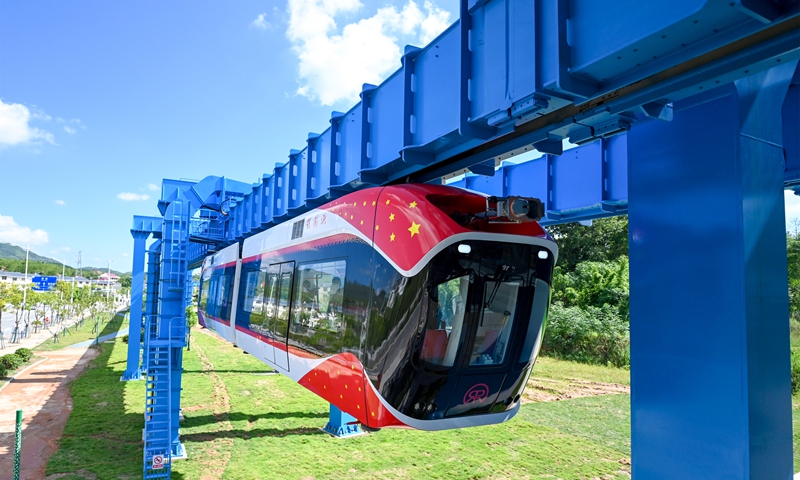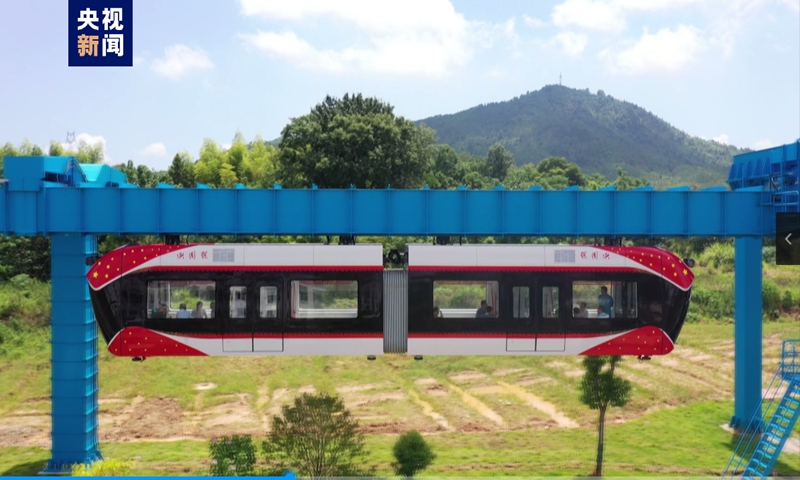
A maglev train Xingguo using the first permanent magnet maglev technology rolls off the production line in Wuhan, Central China's Hubei Province on December 14, 2021. The demonstration train features energy-saving functions, non-contact traction and strong climbing ability. The maximum speed is 120 kilometers per hour. Photo: VCG
Construction of a test track for China's first permanent magnetic levitation (maglev) air train known as "Xingguo" was completed in Xingguo county, East China's Jiangxi Province, according to media reports on Tuesday, marking another milestone in the rapid development of the advanced train system - also the first in the world.
The main part of the test track is an 800-meter elevated single track, with a double track reserved for operations. The train can carry 88 passengers and is designed to run at a speed of 80 kilometers per hour, China News Service reported on Tuesday.
The highlight of the test train is that instead of relying on rubber wheels for load-bearing driving, it uses the principle of repulsion between permanent magnetic materials and rails, which can maintain a suspended state in the centerline of the notch.
"Xingguo" is the first train in the world to combine maglev technology with suspension railway, according to media reports. The first train went offline in Wuhan, Central China's Hubei Province in December 2021, Xinhua reported.
Electromagnetic guidance can achieve zero-friction operation, and it only needs to be driven by a motor.
With its non-contact traction system, the train has various advantages, including a strong climbing ability, smaller turning radius, lower noise levels and zero electromagnetic pollution.
China is the third country after Germany and Japan to have developed non-contact traction technology, according to a report on news website ecns.cn.

The operation of China's first permanent maglev train "Xingguo" in Xingguo, East China's Jiangxi Province on August 9, 2022.
The technology is suitable for conventional environments, including urban areas, commercial districts and towns, and it can also function in more challenging environments such as lakesides, coastlines, frozen soil regions or deserts, according to China Media Group.
The project started in February 2021, and it was jointly developed by the Jiangxi University of Science and Technology and companies including China Railway Science and Industry Group Co and the National Rare Earth Functional Material Innovation Center.
Local officials said that the train uses many strategically emerging industries such as new materials, artificial intelligence, wireless communications and intelligent manufacturing.
Global Times





